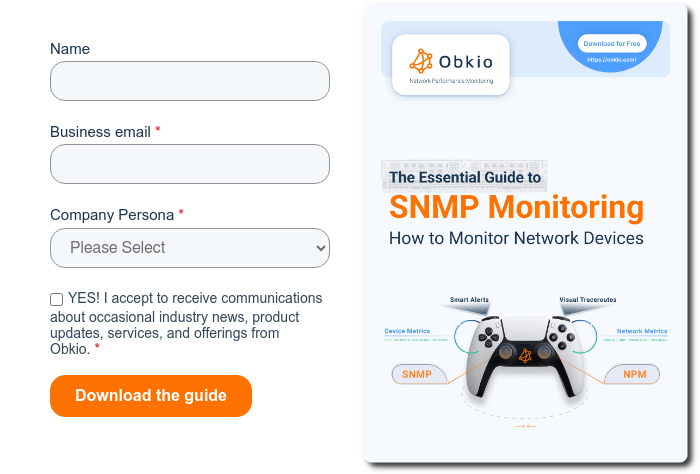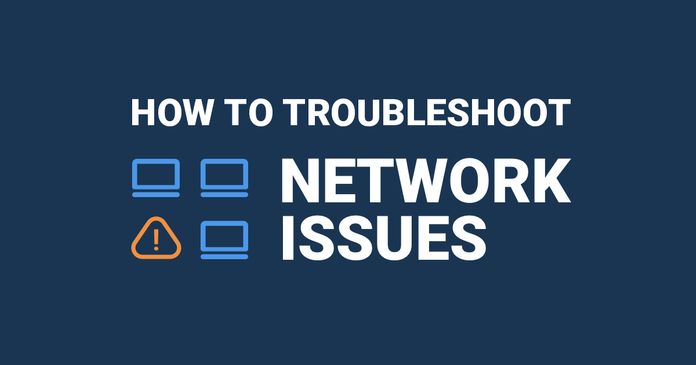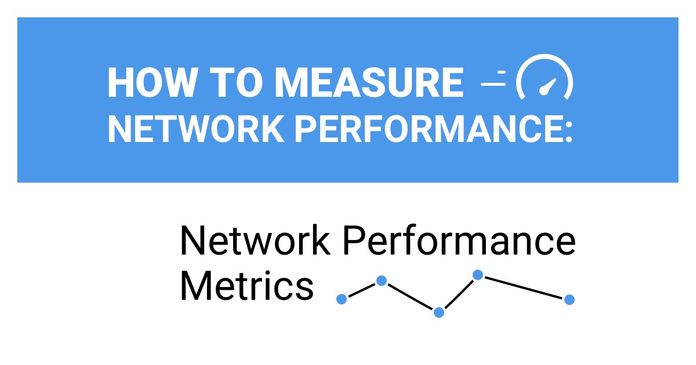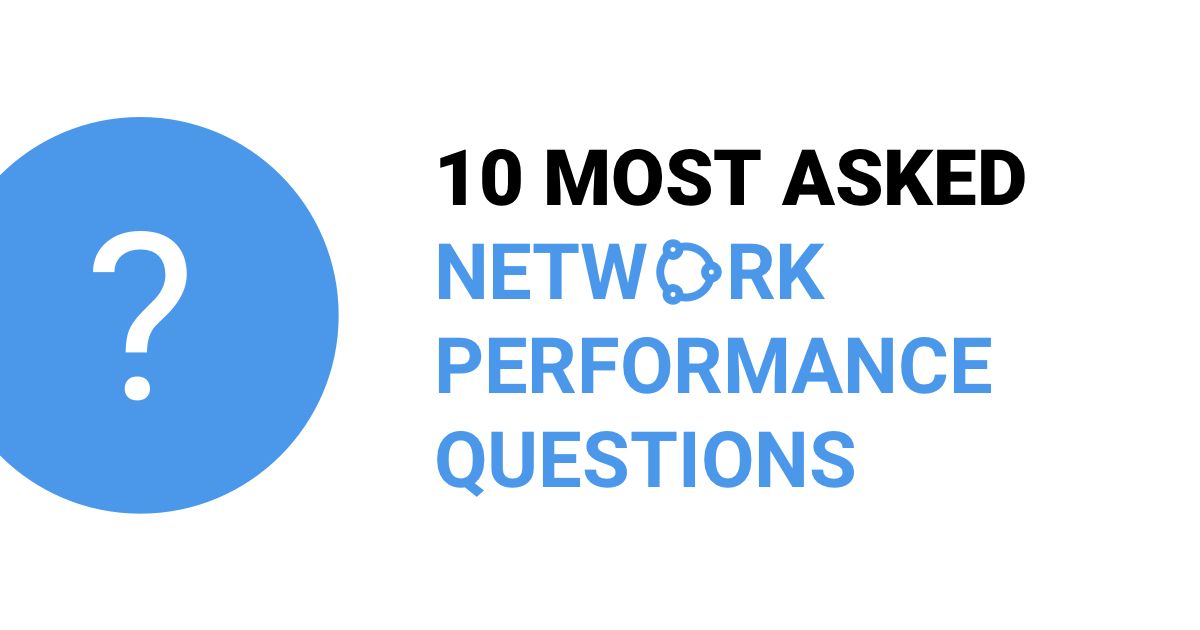Table of Contents
Table of Contents
To effectively manage and maintain network infrastructure, administrators need comprehensive tools and techniques that provide insights into network performance and facilitate proactive monitoring.
One such indispensable tool in the arsenal of network administrators is SNMP (Simple Network Management Protocol) performance monitoring.
SNMP, a widely adopted protocol, is designed to facilitate the management and monitoring of network devices and systems.
It enables network administrators to collect valuable performance data from various network devices, such as routers, switches, servers, and printers.
SNMP operates in a client-server model, where SNMP agents (embedded within network devices) collect and report information to SNMP managers or monitoring systems.
Effective network administration demands a proactive approach to monitoring and maintaining network performance.
Network administrators need to identify and resolve issues before they impact the end-users or the organization's operations.
This is where SNMP performance monitoring plays a crucial role.
SNMP performance monitoring provides administrators with real-time visibility into the performance of network devices and infrastructure.
By actively monitoring key performance metrics and parameters, administrators can quickly detect anomalies, identify bottlenecks, and ensure optimal network performance.
Additionally, performance monitoring allows network administrators to:
Network downtime can have severe consequences, resulting in financial losses, decreased productivity, and damage to an organization's reputation.
SNMP performance monitoring helps administrators ensure high availability and reliability by constantly monitoring device health, network connectivity, and error rates.
Learn what network availability is, how to use network availability monitoring to identify network performance issues vs. network availability issues.
Learn more

Any deviations from the expected performance levels can be promptly identified and addressed, minimizing downtime and maximizing network uptime.
Effective resource allocation is essential for maintaining optimal network performance. SNMP performance monitoring enables administrators to monitor bandwidth utilization, CPU and memory usage, and other resource metrics.
By analyzing these metrics, administrators can identify underutilized or overburdened resources and make informed decisions about resource allocation, ensuring efficient utilization and avoiding performance bottlenecks.
Timely detection and resolution of network issues are critical for maintaining a seamless network experience.
SNMP performance monitoring provides administrators with real-time insights into network performance, including interface statistics, latency, packet loss, and error rates.
Learn how to troubleshoot network issues by identifying where, what, why network problems occur with Network Troubleshooting tools.
Learn more

This information empowers administrators to proactively identify and troubleshoot network issues before they escalate, reducing downtime and minimizing the impact on users.
As organizations grow and network requirements evolve, scalability becomes a crucial factor.
SNMP performance monitoring helps administrators plan for future growth by providing data-driven insights into network capacity and usage patterns.
By monitoring trends and forecasting resource requirements, administrators can anticipate scalability needs, upgrade network infrastructure in a timely manner, and ensure seamless operations during expansion.
In conclusion, SNMP performance monitoring is an essential tool for network administrators.
It empowers them to proactively monitor and manage network performance, optimize resource allocation, detect and troubleshoot issues, and plan for future scalability.
By leveraging SNMP performance monitoring solutions, administrators can ensure the smooth functioning of network infrastructure, enhance user experience, and drive operational efficiency.
In the subsequent sections of this article, we will delve deeper into the intricacies of SNMP performance monitoring, explore its key components, discuss the benefits it offers, and provide insights into its implementation and best practices.
SNMP performance monitoring is a systematic approach to collecting and analyzing performance data from network devices using the Simple Network Management Protocol (SNMP).
SNMP allows network administrators to retrieve valuable information about device health, bandwidth utilization, error rates, and other performance metrics.
At its core, SNMP performance monitoring involves two key entities: SNMP agents and SNMP managers. SNMP agents, residing on network devices, gather performance data and make it available for retrieval.
SNMP managers, on the other hand, collect, analyze, and present this data in a meaningful way for administrators to monitor and troubleshoot network performance.
To fully grasp SNMP performance monitoring, it's important to understand its key components:
- SNMP Agents: SNMP agents are software modules embedded within network devices that gather performance data. They provide an interface for SNMP managers to retrieve information and perform management tasks. Agents are responsible for monitoring various aspects of a device, such as interfaces, CPU utilization, memory usage, and more.
- Management Information Base (MIB): MIB is a collection of structured data objects that define the types of information available for monitoring and managing network devices. It acts as a reference guide, specifying the organization and structure of managed objects that agents expose to SNMP managers. MIBs contain unique object identifiers (OIDs) for each data element, enabling standardized communication between agents and managers.
- SNMP Managers: SNMP managers are the central control points of SNMP performance monitoring systems. They collect data from SNMP agents, store it, and provide analysis and visualization capabilities. SNMP managers typically offer user-friendly interfaces that allow administrators to view real-time metrics, configure network monitoring alerts, generate reports, and perform administrative tasks.
- SNMP Protocol: SNMP relies on a set of standardized protocols for communication between agents and managers. The SNMP protocol defines the format and structure of messages exchanged between the two entities. SNMP version 3, the most recent version, introduced enhanced security features, including authentication and encryption, to ensure the integrity and confidentiality of data transmitted over the network.
To implement SNMP performance monitoring, administrators can utilize a variety of tools and software solutions. These tools range from lightweight, open-source options to comprehensive commercial platforms.
Obkio is a comprehensive SNMP performance monitoring tool that offers a range of capabilities to empower network administrators in optimizing network performance. With Obkio, administrators can seamlessly monitor and analyze SNMP performance metrics across their network infrastructure. It provides real-time visibility into bandwidth utilization, device health, interface statistics, and resource utilization, enabling proactive monitoring and issue detection.

Obkio's user-friendly interface and customizable dashboards allow administrators to visualize SNMP performance data in a clear and intuitive manner. The tool also offers advanced alerting and notification features, notifying administrators of critical performance thresholds or anomalies.
With its robust features and integration capabilities, Obkio simplifies SNMP performance monitoring, helping administrators streamline network management and ensure optimal network functionality.
When selecting a tool, it's important to consider factors such as scalability, ease of use, reporting capabilities, and integration with existing systems.
In the next section, we will explore the benefits of SNMP performance monitoring and how it empowers network administrators to ensure optimal network performance and troubleshoot issues effectively.
SNMP performance monitoring offers a wide range of benefits to network administrators. By providing real-time visibility into network performance and facilitating proactive monitoring, SNMP empowers administrators to ensure optimal network functionality and address issues promptly.
Let's explore some key benefits of SNMP performance monitoring:
One of the significant advantages of SNMP performance monitoring is its ability to enable proactive network monitoring.
Learn how to use synthetic monitoring to monitor network performance & identify network issues, and the benefits of synthetic traffic over packet capture.
Learn more

Rather than waiting for issues to arise and impact network operations, SNMP allows administrators to actively monitor performance metrics in real-time.
By continuously collecting and analyzing data from SNMP agents, administrators can detect early signs of performance degradation, abnormalities, or impending failures. This proactive approach enables timely intervention and helps prevent network disruptions.
SNMP performance monitoring provides administrators with real-time insights into the health and performance of network devices.
Through SNMP managers, administrators can access a wealth of data, such as bandwidth utilization, CPU and memory usage, interface statistics, and error rates.
This visibility allows administrators to identify performance bottlenecks, pinpoint areas of concern, and make informed decisions to optimize network resources and enhance overall performance.
Effective resource allocation is crucial for network performance optimization.
SNMP performance monitoring offers valuable data on resource utilization, such as bandwidth consumption and CPU and memory usage. Administrators can leverage this information to identify underutilized or overburdened resources and optimize their allocation.
By analyzing historical data and trends, administrators can also plan for future resource requirements, ensuring scalability and avoiding resource limitations that could hinder network performance.
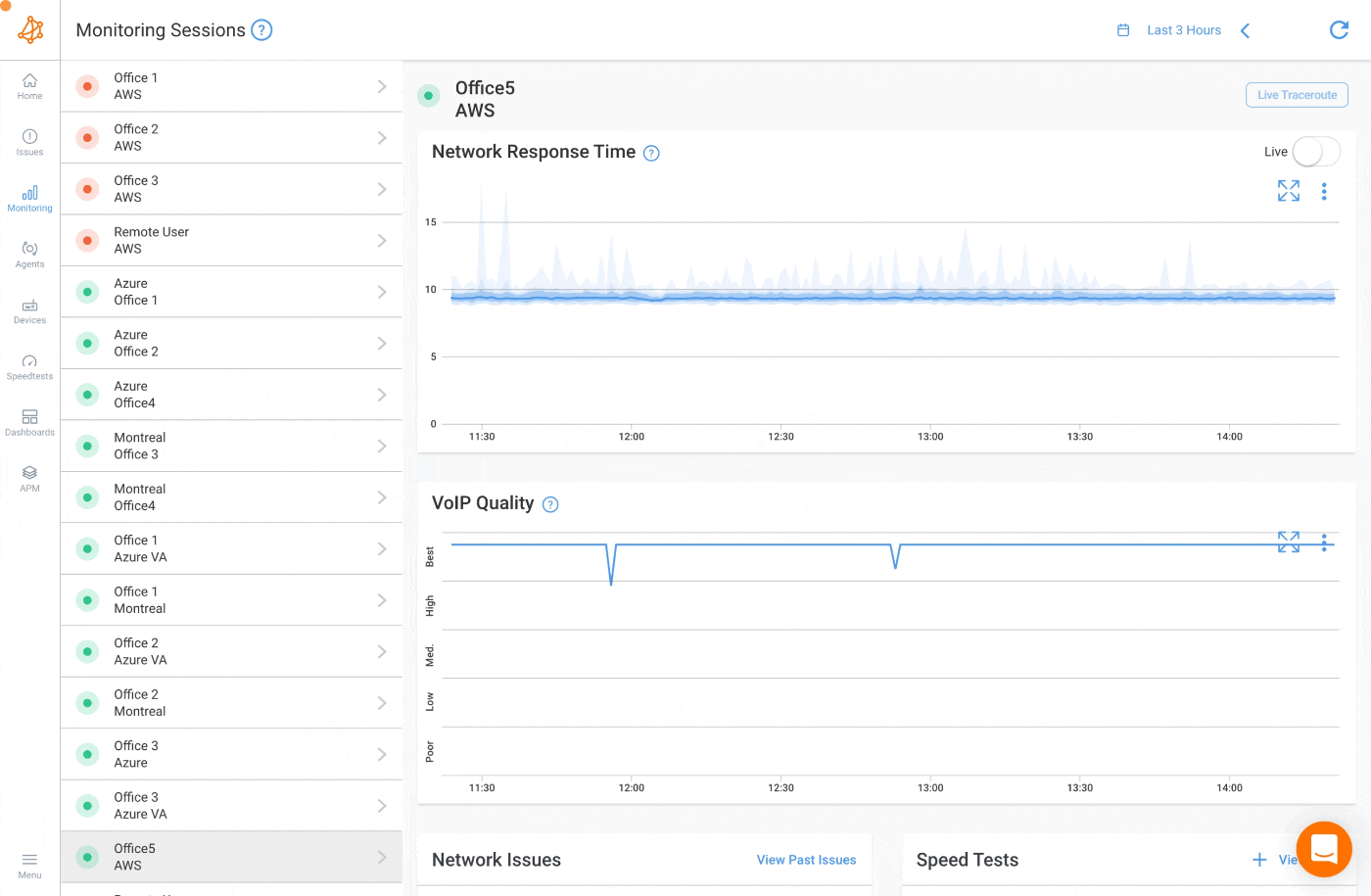
Security is a top concern for network administrators. SNMP performance monitoring plays a vital role in security and compliance by providing insights into network vulnerabilities, anomalous behavior, and potential security breaches.
SNMP agents can generate alerts and notifications when specific security thresholds are breached, enabling administrators to respond promptly and mitigate risks.
Additionally, SNMP facilitates compliance monitoring by tracking and reporting on critical security parameters, ensuring adherence to regulatory standards.
When network issues arise, SNMP performance monitoring can significantly streamline troubleshooting and issue resolution processes.
By monitoring various performance metrics, administrators can quickly pinpoint the root cause of issues, such as high error rates, network congestion, or device failures.
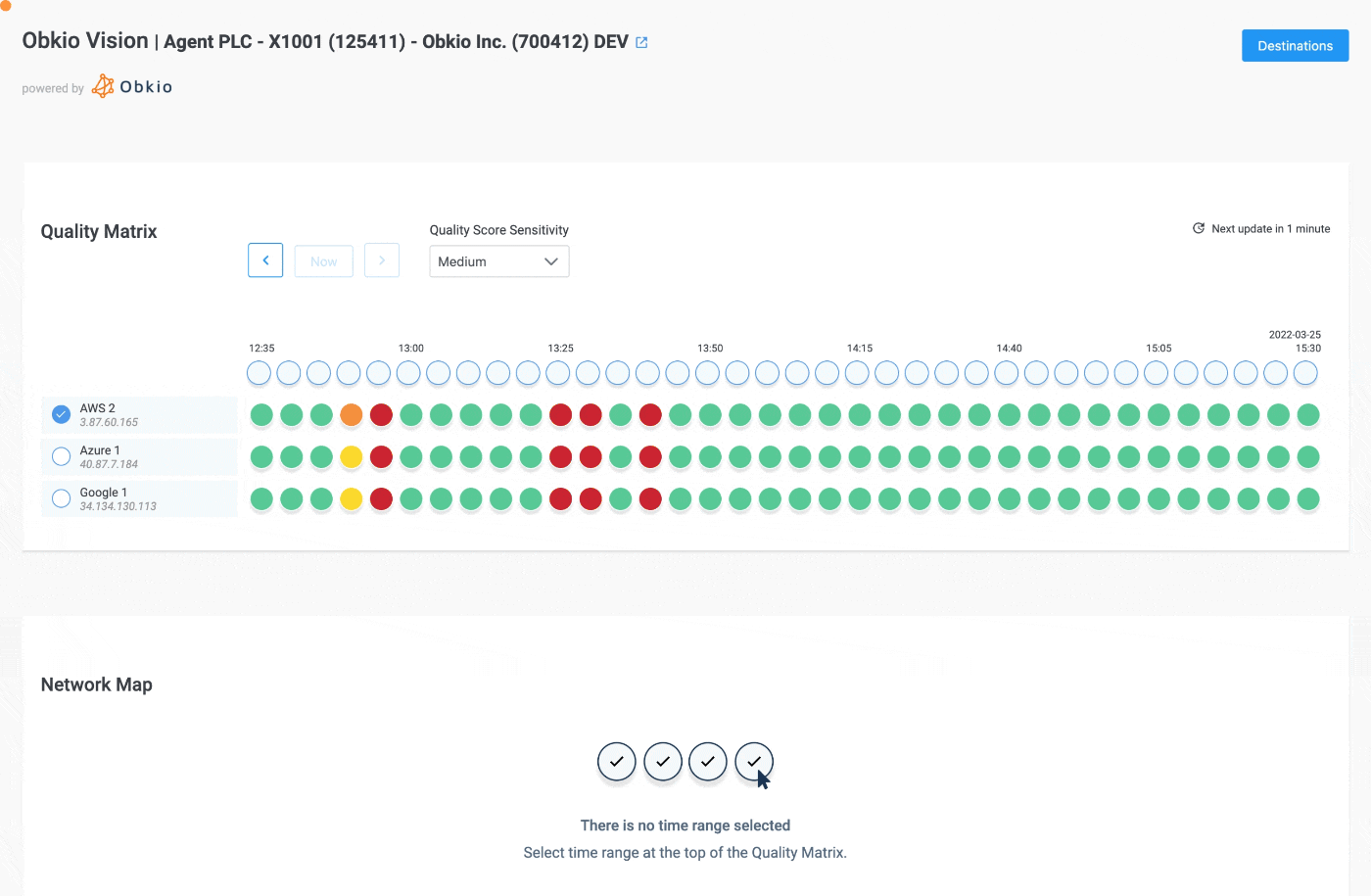
SNMP managers can generate alerts and notifications based on predefined thresholds, enabling administrators to respond promptly to critical incidents.
This proactive troubleshooting approach minimizes downtime and helps maintain network availability and reliability.
Ultimately, SNMP performance monitoring aims to enhance overall network performance and improve the user experience.
By actively monitoring performance metrics, administrators can identify and address performance bottlenecks, optimize resource allocation, and ensure smooth operations.
Unlock the power of network performance reporting with Obkio. Learn the benefits, best practices, and real-world examples. Optimize your network today.
Learn more

This translates into faster response times, reduced network latency, and improved service quality for end-users. A well-monitored network leads to increased productivity, improved user satisfaction, and a positive impact on the organization's bottom line.
In conclusion, SNMP performance monitoring offers significant benefits to network administrators.
By facilitating proactive monitoring, providing real-time insights, optimizing resource allocation, ensuring security and compliance, streamlining troubleshooting, and enhancing network performance, SNMP empowers administrators to effectively manage and maintain network infrastructure.
In the next section, we will dive into the architecture of SNMP performance monitoring and explore the key entities involved: SNMP agents, SNMP managers, and the Management Information Base (MIB).
While SNMP performance monitoring offers valuable insights into network performance, there are certain challenges and considerations that network administrators should be aware of.
By understanding and addressing these challenges, administrators can ensure the effectiveness and efficiency of their SNMP monitoring implementations.
Let's explore some common challenges and considerations in SNMP performance monitoring:
As networks grow in size and complexity, scalability becomes a critical factor. SNMP performance monitoring may face challenges when dealing with large-scale networks with numerous devices and a high volume of performance data.
Administrators need to ensure that their SNMP monitoring systems can handle the increased load and effectively collect, process, and analyze the data generated by a complex network infrastructure.
SNMP performance monitoring introduces an additional overhead on network devices and SNMP agents. Continuous monitoring and frequent polling of performance data can impact device resources, such as CPU cycles, memory, and network bandwidth.
Administrators must strike a balance between the frequency of data collection and the resource utilization on monitored devices.
It's crucial to configure SNMP monitoring parameters appropriately to minimize the impact on device performance while still capturing relevant performance metrics.
While SNMP provides a robust framework for network management, earlier versions of SNMP (such as SNMPv1 and SNMPv2c) lack robust security features. SNMPv3 introduced enhanced security mechanisms, including authentication, encryption, and access control, to address these concerns.
Administrators should ensure that their SNMP performance monitoring systems are configured to use SNMPv3 to safeguard sensitive performance data from unauthorized access and ensure the integrity of the transmitted information.
Network devices from different vendors may have varying implementations of SNMP and MIBs, leading to compatibility challenges.
Administrators should verify SNMP support and compatibility across the devices they intend to monitor. They may need to deal with vendor-specific MIBs or customized SNMP agents that require additional configuration or integration efforts.
Proper testing and validation are crucial to ensure that SNMP performance monitoring tools work seamlessly with the target devices and provide accurate and consistent data.
SNMP communication relies on specific ports (161 for SNMP and 162 for SNMP traps) to transmit data between agents and managers. Network administrators should consider the impact of firewalls and network security policies on SNMP performance monitoring.
They need to ensure that these ports are open and appropriately configured to allow SNMP traffic to flow between devices and the monitoring systems.
Network segmentation and access control lists should be implemented to restrict SNMP access to authorized systems and prevent unauthorized access.
SNMP performance monitoring requires careful configuration to capture the most relevant performance metrics and avoid information overload.
Administrators need to identify the critical performance indicators specific to their network environment and configure SNMP agents and managers accordingly.
This involves determining the appropriate polling intervals, setting thresholds for alerts and notifications, and defining performance baselines for comparison and anomaly detection.
Regular review and adjustment of monitoring configurations are necessary to ensure the monitoring system is aligned with the evolving needs of the network.
SNMP performance monitoring enables administrators to collect a wide range of performance metrics and parameters from network devices.
Learn how to measure network performance with key network metrics like throughput, latency, packet loss, jitter, packet reordering and more!
Learn more

These metrics provide valuable insights into various aspects of network performance, device health, and resource utilization.
Let's explore some key metrics and parameters commonly monitored with SNMP:
Bandwidth utilization is a critical metric for network administrators to monitor and manage network performance effectively.
SNMP performance monitoring allows administrators to track the amount of network bandwidth consumed by devices, interfaces, or specific applications.
By monitoring bandwidth utilization, administrators can identify potential bottlenecks, detect abnormal traffic patterns, and make informed decisions about capacity planning and resource allocation.
Traffic analysis is another important aspect of SNMP performance monitoring. Administrators can collect data on traffic flows, including the volume of data transmitted, source and destination IP addresses, protocols used, and quality of service parameters. This information helps administrators gain insights into network usage patterns, identify potential congestion points, and optimize network performance.
SNMP performance monitoring facilitates device health monitoring by providing critical information about the operational status and conditions of network devices.
Administrators can collect data on device availability, power status, temperature, fan speed, and other hardware-related metrics.
Monitoring device health enables administrators to identify potential hardware failures, proactively perform maintenance, and ensure the smooth operation of network infrastructure.
SNMP performance monitoring allows administrators to monitor the performance and error statistics of network interfaces.
Metrics such as interface utilization, packet throughput, error rates, collisions, and discards provide insights into the health and performance of network connections.
By monitoring interface statistics, administrators can identify interfaces experiencing high utilization, detect packet loss or errors, and take corrective actions to optimize network performance and prevent disruptions.
CPU usage and memory utilization are crucial metrics to monitor the resource usage of network devices. SNMP performance monitoring enables administrators to collect data on CPU utilization, memory usage, and other resource-related metrics.
Monitoring these parameters helps administrators identify devices experiencing high resource utilization, detect potential performance bottlenecks, and optimize resource allocation.
By proactively monitoring CPU and memory utilization, administrators can ensure optimal device performance and avoid resource saturation.
SNMP performance monitoring continues to evolve, driven by advancements in technology and the changing landscape of network environments. As the demands on networks increase and new technologies emerge, SNMP performance monitoring is poised to embrace future trends that enhance its capabilities.
Let's explore two key trends that are shaping the future of SNMP performance monitoring:
Artificial Intelligence (AI) and Machine Learning (ML) are transforming various industries, and SNMP performance monitoring is no exception. By leveraging AI and ML techniques, SNMP performance monitoring systems can gain deeper insights from the vast amount of collected data, automate analysis processes, and enable predictive capabilities.
AI and ML algorithms can analyze historical SNMP performance data to identify patterns, anomalies, and potential performance issues.
This helps administrators proactively detect and address network bottlenecks, predict resource requirements, and optimize network performance.
Additionally, AI-powered anomaly detection algorithms can automatically flag unusual network behavior, aiding in the rapid identification and resolution of network issues.
Furthermore, AI and ML can enhance the efficiency of SNMP performance monitoring by automating routine tasks, such as data collection, analysis, and report generation. This frees up administrators' time, allowing them to focus on strategic network management activities.
As Software-Defined Networking (SDN) and cloud environments gain prominence, SNMP performance monitoring is adapting to these new network architectures. SDN separates the control plane from the data plane, centralizing network management and configuration. SNMP performance monitoring systems can integrate with SDN controllers to gain real-time visibility and control over the network infrastructure.
With SDN, SNMP performance monitoring can leverage the programmability and automation capabilities of SDN controllers to dynamically adjust network policies and resource allocation based on real-time performance data.
This integration enables administrators to optimize network performance, allocate resources on-demand, and ensure consistent monitoring across the SDN infrastructure.
Similarly, SNMP performance monitoring is evolving to accommodate cloud environments.
As organizations migrate their networks and services to the cloud, SNMP monitoring solutions are adapting to collect performance data from cloud-based infrastructure, virtualized environments, and cloud service providers.
This allows administrators to monitor the performance and health of both on-premises and cloud-based resources within a unified monitoring framework.
The architecture of SNMP performance monitoring revolves around the interaction between SNMP agents, SNMP managers, and the Management Information Base (MIB). Agents collect performance data, managers retrieve and analyze it, and the MIB provides the framework for standardized communication.

By understanding this architecture, network administrators can leverage SNMP performance monitoring tools effectively. In the next section, we will delve into the specific metrics and parameters that can be monitored using SNMP, providing a comprehensive view of network performance.


























 Obkio Blog
Obkio Blog



